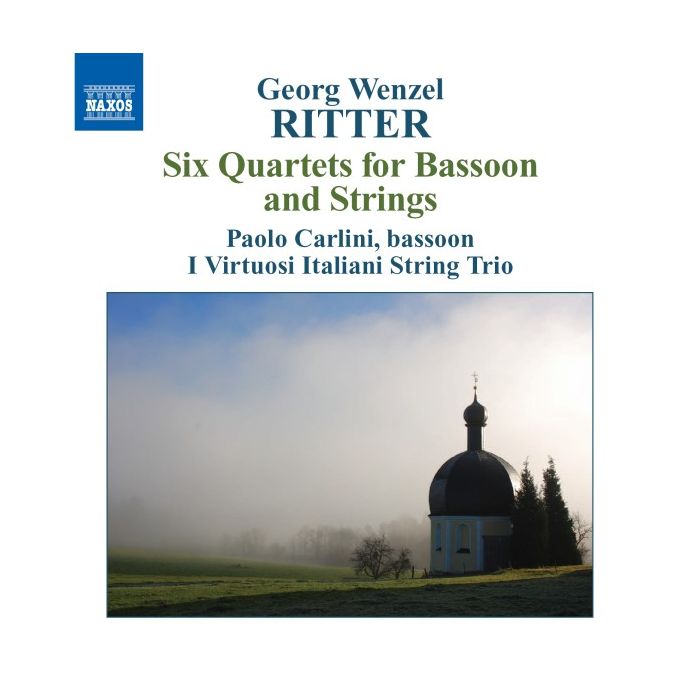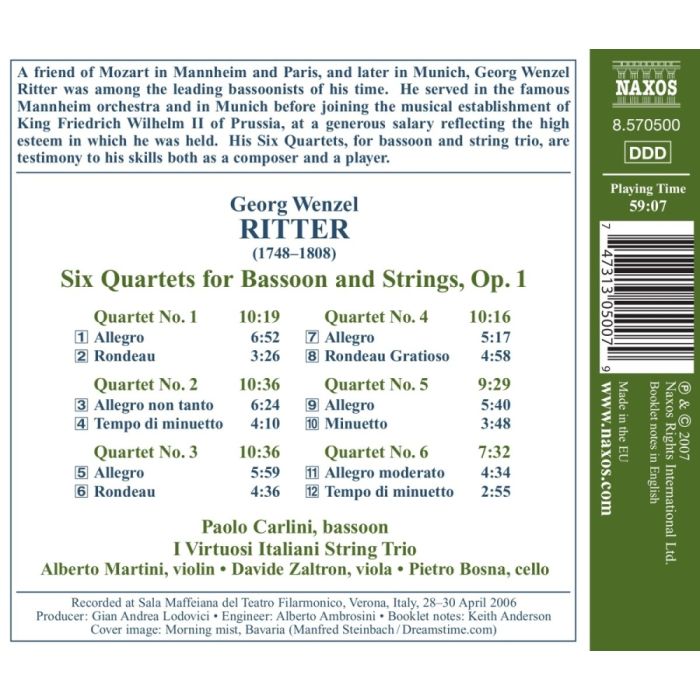
(Produkt nie został jeszcze oceniony)
kompozytor
Ritter, Georg Wenzel
tytuł
RITTER Georg Wenzel - Six Quartets for Bassoon Op. 1
wykonawcy
Carlini, Paolo, Virtuosi Italiani String Trio
nr katalogowy
8.570500
opis
Georg Wenzel Ritter was born in 1748 to a musical family with close connections to the court orchestra in Mannheim, Georg following in his father's footsteps as a member of the bassoons. In 1788 he left to join the Prussian court orchestra of King Friedrich Wilhelm II, a large salary seemingly the main incentive, He was to remain their until his death in 1808. Moving in distinguished musical circles, and drawing admiration from the Bach and Mozart families for his compositions, they were mainly written with himself as the performer and included two bassoon concertos. Though carrying the first opus number, the Six Quartets were written in his maturity and probably date from 1779. In form they were all in two relatively short movements, the melodic material mostly given to the bassoon, the three strings largely offering a backdrop, a characteristic here highlighted by the prominence given to the Paolo Carlini. Where they do differ from Mozart is the lack of a real sense of fun, the fast movements having considerable vivacity, but never bubbling with happiness. They do, however, often require considerable agility from the bassoon, here provided in abundance by the former principal bassoon of Milan's La Scala Orchestra, now holding the same position with the Orchestra della Toscana. Vibrato is kept to a minimum, his tone less honeyed than his Czech and Hungarian counterparts, while avoiding that hard edged quality that has in recent times become fashionable, Try track 11, the opening movement of the Sixth, to sample all of these attributes, while it does give some brief evidence of the quality of the strings. It's not a massive discovery, but bassoonists will welcome the rewarding content. I just wish the engineers had given us more from the strings. • David Denton, David's Review Corner, July 2007
nośnik
CD x 1
wydawca
Naxos
data wydania
20.08.2007
EAN / kod kreskowy
747313050079
58,00 zł
Produkt na zamówienie
Wysyłka ustalana indywidualnie.
Darmowa wysyłka dla zamówień powyżej 300 zł!
Darmowy kurier dla zamówień powyżej 500 zł!
sprawdź koszty wysyłki
